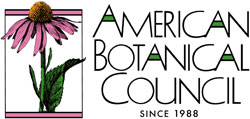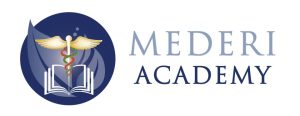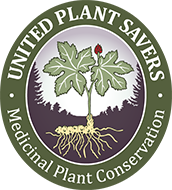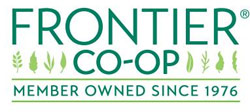Mary Bove, ND was recently asked a question as part of the 2020 Summer Series: “What three herbs would you recommend for study by beginning students of herbalism?” In the video above she listed Rosmarinus officinalis (Rosemary), Curcuma longa (Turmeric), and Melissa officinalis (Lemon Balm) as a great place to start. She stated that focusing on a few herbs allows the student to experience a more comprehensive understanding of these botanicals’ biological multi-functionality.
Several lectures were selected for review from the BotanicalMedicine.org recording and book archives to demonstrate the array of potential uses of these three herbs within clinical environments.
Rosemary
Sam Coffman’s lecture Biofilms and Botanical Medicine elucidates the intricacies of working with bacterial infections using rosemary as a supportive herb.
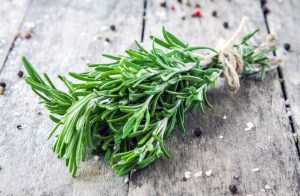 Biofilms are less susceptible to antibacterial interventions than bacteria in its planktonic form and noting the differences in reactivity are critical to working with patients who present with bacterial infections1. Sam Coffman defines appropriate botanical interventions within the context of “…the effects exerted upon bacteria that break down its ability to defend itself.” Quorum sensing inhibitors can increase the antibacterial effects of other herbs or cause more effective support of body tissue from other botanicals, of which rosemary is one Coffman remarks2.
Biofilms are less susceptible to antibacterial interventions than bacteria in its planktonic form and noting the differences in reactivity are critical to working with patients who present with bacterial infections1. Sam Coffman defines appropriate botanical interventions within the context of “…the effects exerted upon bacteria that break down its ability to defend itself.” Quorum sensing inhibitors can increase the antibacterial effects of other herbs or cause more effective support of body tissue from other botanicals, of which rosemary is one Coffman remarks2.
28 TCM & Ayurvedic Herbs that Western Clinicians Need to Know presented by David Winston, RH (AHG), specifies rosemary as an additive to formulas that address nervous system symptomology.
Albizia bark/He Huan Pi (Albizia julibrissin) is an herb that is a mood elevator and anxiolytic3. Furthermore, the antidepressant efficacy, which works via the central nervous system receptor 5-HT(1A), has been found effective in animal studies4. Rosemary is an ingredient David Winston adds to Albizia bark formulations to treat patients with chronic situational depression as it can stimulate the sympathetic branch of the nervous system. Tincture and tea dosage guidelines are provided to inform patient treatment.
Turmeric
Mark Blumenthal’s presentation Preventing Adulterants in Our Botanical Medicine examines adulteration in botanical medicine commodities.
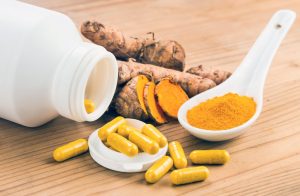 The growth in global demand for herbal medicines has increased fraud and adulteration, attributed to either human error or are economically motivated adulteration (EMA)5. In this lecture, turmeric is one of the herbs listed as vulnerable to EMA. The instability and low bioavailability of curcumin magnify the importance of peer-reviewed research that enables standardization requirements. Educating practitioners and the herb industry to facilitate accurate assessment of botanical products within their practices is vital to patients’ health.
The growth in global demand for herbal medicines has increased fraud and adulteration, attributed to either human error or are economically motivated adulteration (EMA)5. In this lecture, turmeric is one of the herbs listed as vulnerable to EMA. The instability and low bioavailability of curcumin magnify the importance of peer-reviewed research that enables standardization requirements. Educating practitioners and the herb industry to facilitate accurate assessment of botanical products within their practices is vital to patients’ health.
The Naturopathic Strategies for Patients with Exposure to Molds and Mycotoxins lecture presented by Kenneth Proefrock, ND includes a thorough examination of turmeric’s benefits as an anti-inflammatory.
There are two categories of mycotoxins; primary pathogens (Coccidioides immitis and Histoplasma capsulatum) or opportunistic pathogens (Aspergillus fumigatus and Candida albicans) of which the majority of human mycoses are the latter6. The demulcent effects of Glycyrrhiza glabra (Licorice) on the intestinal tract are enhanced by turmeric. Formulas that include turmeric are “even more anti-inflammatory in its action than licorice, but the two together are a synergistic mix that works incredibly well,” states Kenneth. In addition to providing anti-inflammatory benefits, turmeric also has anti-fungal and anti-bacterial qualities. He also discusses lemon balm as an herb demonstrating efficacies within a treatment plan for patients with mycotoxin exposure.
Lemon Balm
Kat Maier defines the parameters of her lecture Energetics of Menopause stating, “One of the greatest gifts we are receiving from traditional medicine practices is the ability to view physiology as well as treatment and prevention from an energetic viewpoint.”7
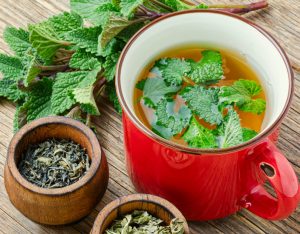 The underlying systemic imbalance experienced by menopausal women is reviewed through the lens of TCM, Ayurveda, and Western energetics in treating symptoms. The hormonal fluctuations causing mood swings are mitigated by lemon balm therapeutics. Mood fluctuations can lead to menopausal depression, and the cooling, rejuvenating effects of lemon balm ease hormonal changes.
The underlying systemic imbalance experienced by menopausal women is reviewed through the lens of TCM, Ayurveda, and Western energetics in treating symptoms. The hormonal fluctuations causing mood swings are mitigated by lemon balm therapeutics. Mood fluctuations can lead to menopausal depression, and the cooling, rejuvenating effects of lemon balm ease hormonal changes.
Jeffrey Langland, PhD, presents the results from research that found a new mechanism of action for Melissa Officinalis in treating Herpes Simplex Virus (HSV)8.
The use of lemon balm in treating HSV has an extensive history because of its viral inhibitory effects, which interrupt the replication of the virus. The in vitro assay methodology reveals how the new mechanism was discovered: Introduction of the active chemical compounds of Melissa Officinalis into the life cycle of HSV suppressed the virus’ ability to multiply. The lecture provides a comprehensive evaluation that extends botanical strategies in treating HSV and may offer new insights into treating drug-resistant bacterial infections.
Bibliography
-
- Coffman, Sam. “Biofilms and Botanical Medicine.” [Audio] Recorded March 31, 2019.
- Coffman, Sam. “Biofilms and Botanical Medicine.” [Audio] Recorded March 31, 2019.
- Winston, David. “28 TCM & Ayurvedic Herbs that Western Clinicians Need to Know.” 2019 Medicines from the Earth Herb Symposium: Conference Book June 3, 2019: pp. 341-349
- Kim, J.H., Kim, S.Y., et al, Antidepressant-Like Effects of Albizzia julibrissin in Mice: Involvement of the 5-HT(1A) Receptor System, Pharmacol Biochem Behav., 2007 May;87(1):41-7
- Blumenthal, Mark. “Preventing Adulterants in Our Botanical Medicine.” [Audio] Recorded March 31, 2019
- Proefrock, Kenneth. “Naturopathic Strategies for Patients with Exposure to Molds and Mycotoxins.” 2019 Southwest Conference on Botanical Medicine: Conference Book March 31, 2019: pp. 184-208
- Maier, Kat. “Energetics of Menopause” 2014 Medicines from the Earth Herb Symposium: Conference Book June 2, 2014: pp. 152-158
- Langland, Jeffrey. “Comparative Mechanisms of Action between Botanical Antimicrobials and Pharmaceutical Drugs.” 2018 Southwest Conference on Botanical Medicine: Conference Book April 18, 2018: pp. 105-117
Mary: Yes, I think that’s a great question and many, many people feel that way. And I do think that taking the time to spend some time with different books or hearing different people talk, events like this where there are multiple different teachers so you get a kind of different slice of many pies. It can really be helpful. And focusing in on just a few herbs and recognizing that herbs multi-function and they have multi different types of actions that they can bring forth and their ability to interface with the body.
For me, I like to grow plants and so I would be turning to plants that might either grow around me and/or I grow in my garden or something that I might find in my kitchen. And I think if you’re new and you’re looking to try and start with some plants, right away checkout rosemary. Rosemary is much more than just a plant that you cook with beef and potatoes and things like that. There’s a lot of good research if that’s what you’re interested in with that. It affects our brain and brain function and how we age, our heart. So that’s right there in the kitchen and so you can experience it in a variety of different ways.
Check out turmeric. There’s a plant that really helped to get a lot more people interested in herbs because there’s so much science and it really stands up to and talks to a lot of people because of its ability to reach in so many ways and really be able to show its ability both through science and research and through observation.
And then my old time favorite would be lemon balm. Easy to grow in the garden, wonderful scent—you can’t walk by it and smell it without smiling. There are multiple different uses from sleep to mood enhancement, to digestive support and calmness for lemon balm. So those three—you could read many many pages in many books. They will be included in so many books and really get a lot of information and think wow these three herbs really might actually be enough for me to start with and feel like I could get a good grip on.
Contributing blogger: Robin St James
Interested in earning Naturopathic CE credits ?



